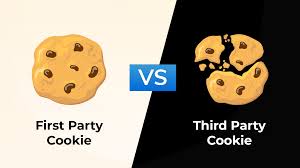Are cookies out of the advertising game? Not entirely. In 2020, Google broke the news that Chrome would phase out third-party cookies. After that, they hit the “Postpone” button multiple times, pushing the deprecation deadline to the end of 2024. As privacy laws become stricter, the protection of personal data is more important than ever.
Things took another turn when Anthony Chavez, the Vice President of Product Management at Google, dropped the big news in his post on July 22, 2024.
In this article, we’ll break down where things stand with cookie deprecation now, how cookies work in Chrome after the latest updates, the impact of third-party cookies gone, and discuss alternatives to highly targeted cookie-based ads.
Cookie Crumble: What’s Been Happening?
In response to public demands and regulations from GDPR and CCPA, Google decided to phase out third-party cookies in 2020. A year later, the tech giant introduced “Privacy Sandbox,” an alternative solution for targeted advertising.
The key stakeholders, including the UK’s Competition and Markets Authority (CMA), didn’t take this move well. They expressed concerns about Google dominating the advertising space, especially with third-party cookies gone. Many believed that Privacy Sandbox could harm healthy competition in the market because Google would have all the control over how it works.
Caught between regulatory demands and industry pressure, Google hit the brakes on its cookie phase-out plan. In a blog post from July 2024, Antony Chavez, Vice President of Product Management at Google, stated:
“Instead of deprecating third-party cookies, we would introduce a new experience in Chrome that lets people make an informed choice about third-party cookies gone, applying it across their web browsing. They’d be able to adjust that choice at any time.”

How Do Third-Party Cookies Work in Chrome Now?
Chrome pretty much works the same way as before. When you visit a website, you get a pop-up asking if you’ll accept or reject cookie tracking. You’ve seen it a million times.
The only difference is that you can now be pickier about how your data is used. As Google announced, Chrome added toggles for each type of cookie, with explanations about how your info might be used and where it goes. For example, you can block third-party cookies while accepting first-party cookies that remember your passwords and language preferences. With this shift, Chrome users can adjust the use of third-party cookies and move towards a browsing experience without third-party cookies if desired. This change highlights the impact of third-party cookies gone for tracking, supporting user privacy and data privacy by providing an alternative to third-party cookies that doesn’t rely on cookie tracking to monitor users across sites.
In response to rising concerns, Google Chrome’s new features make it easier to control the use of cookies, offering options that allow users to avoid the use of third-party cookies in favor of first-party data. This approach represents a shift away from third-party cookies while still supporting specific user needs. While support for third-party cookies is still available in Chrome, the web browser now prioritizes transparency, enabling users to rely on first-party and third-party settings only as they see fit. The trend of saying goodbye to third-party cookies reflects a growing awareness of data privacy and is guiding browsers to reduce reliance on tracking cookies. Thus, Chrome users are now adjusting to a browsing experience where third-party cookies are gone, gaining more control and choice over how their information is managed and shared.
The buzz around the cookie deprecation wasn’t unfounded. In a recent Statista study, 75% of marketers from eight countries worldwide said they still rely heavily on third-party cookies. They’re and always have been the backbone of targeted ads.
However, some experts believe that just because Google hasn’t eliminated cookies doesn’t mean marketers should get comfortable with old habits. David Cole, Marketing Director at Hypnopixels, an AI-powered platform for image generation, says:
A cookie-free space already exists. Many people browse the web using Firefox and Safari — both phased out third-party cookies in 2013 — or use Chrome extensions that block them. This means that a significant portion of your target audience might be “immune” to cookie-based targeted ads.
What’s the smartest move to make now? Diversify your data-based marketing. It will broaden your reach and future-proof your advertising.
David’s suggestions are worth listening to, especially in light of recent Google updates. Yes, third-party cookies aren’t out of the game, but any user can turn them off or install a cookie-free browser on their device. A recent Eurostat survey found that 35% of Internet users change browser settings to limit cookie use, and 21% use cookie-blocking software.
Your Privacy-Focused Alternatives Now That Third-Party Cookies Are Gone
Since Google first announced the phase-out of third-party cookies, advertisers, marketers, and data engineers have been working hard to find a viable replacement before the end of 2024, when the demise of third-party cookies will happen. With Chrome’s third-party cookie deprecation coming soon, there has been a clear shift towards a world with third-party cookies gone, as many look for new ways to handle cookie information and cookie data more responsibly. Now, enhanced tracking protection and intelligent tracking prevention are becoming key to user privacy by limiting tracking from third-party cookies, supporting a more privacy-focused approach to online data.
As Google third-party cookies are going away, businesses are getting ready for the removal of third-party cookies from the web. This shift involves getting rid of third-party cookies or limiting access to third-party cookies, while still allowing first-party cookies. This balanced approach focuses on using first-party and third-party cookies carefully, where first-party cookies are created to improve the user experience, such as remembering passwords and preferences. Meanwhile, third-party cookies are blocked more often as the industry moves away from using third-party cookies for ads and data collection.
The move away from third-party cookies is challenging because 3rd party cookies have been an important tool in digital marketing, helping to understand user behavior. However, this change has led to the development of new solutions that don’t rely on third-party cookie tracking. Here are some of the best options to consider as we near the end of support for third-party cookies and the full deprecating of third-party cookies:
Contextual Targeting
Contextual targeting has been around way before the Internet existed. Have you ever read a newspaper interview with a makeup artist listing products they used? That’s contextual targeting.
Online contextual advertising works similarly. It lets advertisers place ads for particular products or services on websites that rank for the same keywords as their ads. So, if you’re selling a wellness app, your ads might show up on lifestyle blogs.
While some experts think that contextual advertising is less precise than other techniques that rely on user behavior, Artificial Intelligence (AI) is already here to save the day. AI performs an in-depth analysis of a web page’s content — text, images, videos, and structure — to serve up the most relevant ads to your target audience…and place them in the right spot!

First-Party Cookies
First-party cookies track user activity on a particular site. You’ve probably used features like automatic login, saved items in your shopping cart, and personalized recommendations. First-party cookies make all that happen.
They’re less intrusive than third-party cookies because they don’t follow every move of a user on other websites. Only the domain owner can track and access them.
First-party data can be used in several ways when it comes to ad targeting. As it stores the browsing history of users on a particular site, you can use it to provide them with lists of recommended content or products that they are more likely to be interested in. They’re also helpful in optimizing your content and ads because you can map out the entire user journey on your site.
Zero-Party Data
Zero-party data is customer data that companies collect directly from users through polls, quizzes, interactive tools, and surveys. It’s unique in some ways: more accurate than other data types, easy to interpret, and highly transparent.
All these benefits stem from the way businesses acquire zero-party data. Users engage with them not just out of curiosity but because there’s a value exchange. For example, a clothing brand might ask you to answer a few questions to help pick the best capsule wardrobe for this fall and compile a recommendation list for you accordingly.
On your end, zero-part data collection leads to high-quality ads, personalized user experiences, and more relevant product recommendations. Of course, it’s not as scalable as third-party data collection, but the quality is unbeatable.
Google Topics
Privacy Sandbox isn’t running at full capacity yet, but a part of it — Google Topics — seems to be a promising alternative that already works.
The technology behind Google Topics is browser-based, which means that it uses data from browsing activity within the user’s current session. As soon as it has enough information to narrow down your interests, it will start showing ads related to that topic. No cookies needed!
On the downside, this solution targets a limited number of themes, around 600 or so. Federated Learning of Cohorts (FLoC), the predecessor to the Topic API, allowed for more granular targeting, but Google rolled it back due to privacy concerns.
Final Words
The four-year story of third-party cookie deprecation is finally reaching an important stage. Google plans to phase out support for third-party cookies in Chrome in 2024, with big changes coming by early 2024 and more by Q1 2024. The decision that third-party cookies are going away doesn’t mean online advertising or privacy rules have stopped changing. Tech giants like Google are finding new ways to reduce the use of third-party tracking and marketing cookies, so advertisers can rely more on first-party data instead of third-party cookie support.
For those already transitioning away from third-party cookies, remember that cookies have been a fundamental part of digital marketing, helping us understand user behavior. But with cookies disabled or limited, advertisers need new ways to reach end users. Google Consent Mode V2, Google Analytics updates, and the separation of first- and third-party cookies now help to clearly inform end users about tracking. Since cookies are small pieces of data, they can be easily blocked or controlled, especially in the Google Chrome browser, where Chrome in 2024 will give more options to block third-party cookies by default or even prevent third-party cookies completely.
A good marketer needs to stay flexible and should have plans B, C, and even D, especially for users who already live in a cookie-free world. With personalization by the end of 2024 looking different, and as we near the end of 2020’s original deadline to move away from third-party cookies, it’s important to try different data strategies and get ready for limited cookie access. By January 2024, many will need to rely more on first-party data, and marketing cookies may also see further changes.

